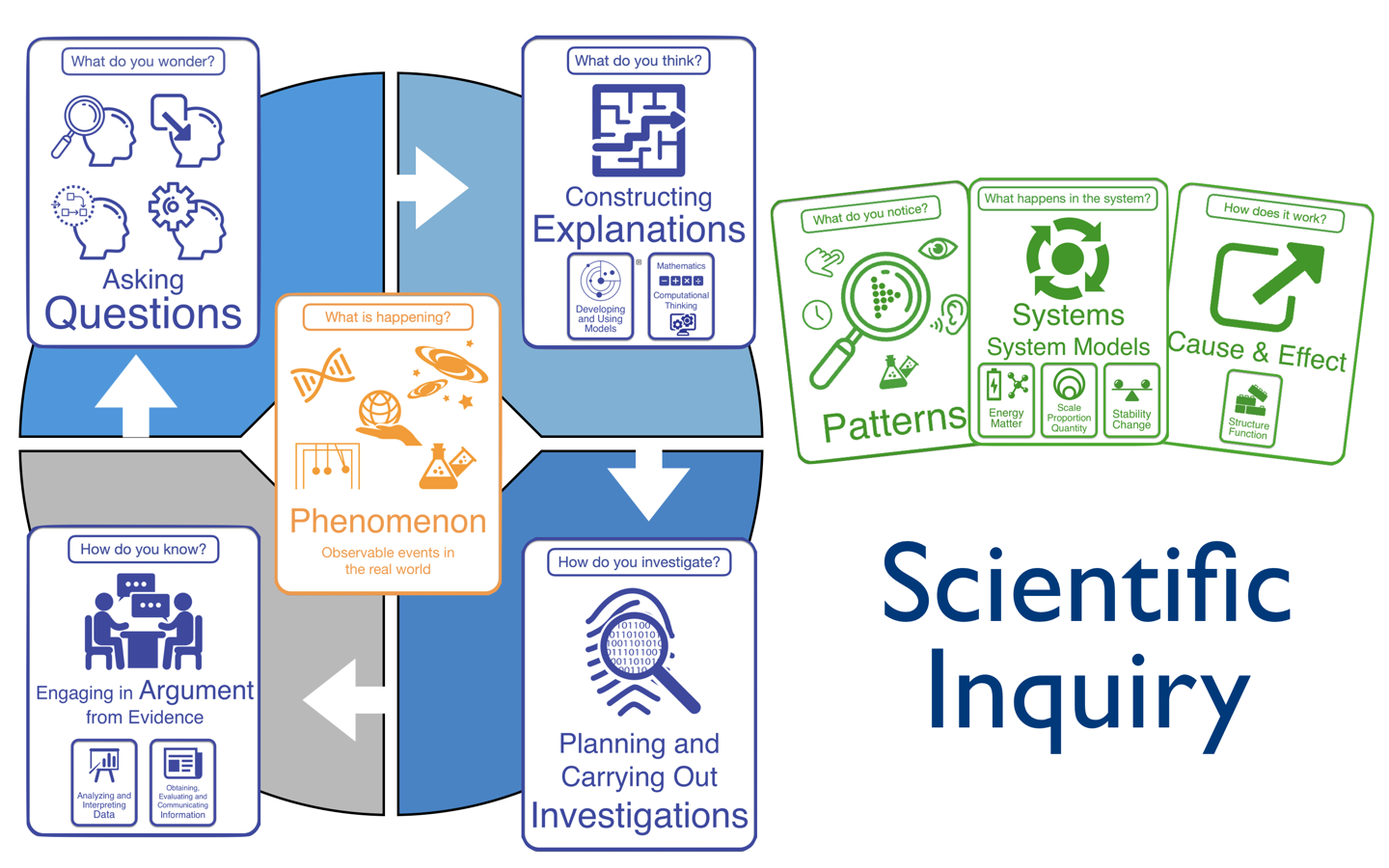Scientific Inquiry in Five Steps
Step 1: Find a Phenomenon
A phenomenon is simply an observable event. In the science classroom a carefully chosen phenomenon can drive student inquiry. Phenomena add relevance to the science classroom showing students science in their own world. A good phenomenon is observable, interesting, complex, and aligned to the appropriate standard.
Step 2: What Do You Wonder?
The first step of scientific inquiry is questioning. Classroom questions can be aggregated and sorted using several different filters (e.g. crosscutting concept, testability). Questions can be added and improved to provide more clarity on the phenomenon.
Asking Questions Graphic Organizer - Google Draw or PDF
Asking Questions Google Draw or PDF
Teacher’s Edition Google Draw or PDF
Step 3: What Do You Think?
Students should model their initial explanation (i.e. cause and mechanism) for the phenomenon. A summary of classroom models can be used to plan investigations. Individual student models should be improved through investigation and argumentation to construct new knowledge.
Developing and Using Models - Google Draw or PDF
Cause and Effect - Google Draw or PDF
Modeling Google Draw or PDF
Teacher’s Edition Google Draw or PDF
Teacher’s Edition - Energy and Particles Google Draw or PDF
Step 4: How Can You Test It?
Students should plan and carry out investigations to test their models. In a controlled scientific investigation the cause (independent variable) should be varied and the effect (dependent variable) should be recorded.
Planning and Carrying Out Investigations - Google Draw or PDF
Investigations Google Draw or PDF
Teachers’s Edition Google Draw or PDF
Alternative Form PDF
Step 5: How Do You Know?
An argument contains evidence supporting a claim with reasoning. The summary of all arguments can be used to improve the classroom model and may be used to plan future investigations.
Engaging in Argument from Evidence - Google Draw or PDF
Argumentation Google Draw or PDF
Teacher’s Edition Google Draw or PDF
Vertical Argumentation Organizer Google Docs or PDF



